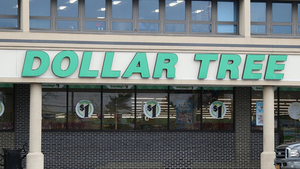Gluten free for all
January 1, 2018
As the gluten-free category evolves into the mainstream, consumers are expecting tasty, nutritious and convenient options to satisfy their dietary needs.
Does everyone want to eat gluten-free?
It certainly seems like it. While statistics show that a mere 1% of consumers are diagnosed with celiac disease, more than one of five shoppers indicated that they had purchased gluten-free food in the past week, according to a survey in The Hartman Group’s Culture of Wellness report.
Industry observers say that besides those consumers with celiac disease, there are a growing number of other shoppers, ranging from those seeking ways to lose weight to having other medical conditions, who want to shop the section. Take Susan Hougi, for example. The president of Gee Free, a manufacturer of gluten-free pastries, appetizers and meals, Hougi has autoimmune issues, and after years of suffering, she found that switching to a gluten-free diet was the solution she had been searching for.
That should be great news for supermarket retailers. As more gluten-free products hit store shelves and the quality of the merchandise improves, retailers say that the category is quickly turning into a major destination for many shoppers.
“There are consumers saying, ‘I’m feeling a little bit bloated, I’ve seen some information from a celebrity or in the press, let me just try a gluten-free diet and see if that helps with anything related to my digestive health,’” says Arjan Stephens, executive vice president of sales and marketing for Nature’s Path, based in Richmond, B.C., Canada. “A lot of consumers are seeing that it is giving them some relief of some digestive issue they are having.”
With the success of gluten-free come more players wanting to be involved in the category. Segments that no one would have considered in the past have become gluten-free markets. Beer is one segment that until about nine years ago was virtually impossible for those with celiac disease to enjoy. That is, until Bard’s Tale Beer Co. introduced its gluten-free American Amber Lager. “There are significantly more competitors in all segments of the gluten-free market. I think the quality of the offerings has improved, so we are now seeing a larger variety of better products,” says Brian Kovalchuk, CEO of the Minneapolis-based company.
Also helping the category is the simple fact that products taste a lot better today than just several years ago, say observers. “Five years ago, if products were safe, people were happy,” says Joel Warady, chief sales and marketing officer at Schiller Park, Ill.-based Enjoy Life Foods. “If they tasted just okay, they still bought them. About two years ago, the taste bar was raised; taste became a real deciding factor and the taste got much better with most companies.”
That taste bar has changed the whole model for the category. Unlike just a few years ago, the gluten-free consumer does not have to feel like an outcast or sacrifice convenience, taste or nutrition to meet their dietary needs. While convenience is paramount, sophisticated consumers wants something that is good for them too—often, this means a gluten-free option.
It is for this reason that many observers have noted a noticeable uptick in the selection of gluten-free in both the snack and frozen aisles. “Most people want convenience. Just because someone is eating gluten-free doesn’t mean they don’t expect and want convenience,” says Anna Sobaski, president and founder of Breads From Anna. The Iowa City, Iowa-based company makes gluten-free and free-from baking mixes, pancake mixes and pizza crusts.
Other companies are dipping their proverbial toes into the segment, too. For example, Dr. Schar USA is making a foray into the gluten-free frozen foods category with entrées that are made in Italy. Executives at the Lyndhurst, N.J.-based company say their gluten-free offering is the best selling brand in Europe. With the current consumer emphasis on convenience, company officials are hoping its frozen food venture will help Dr. Schar secure its spot in the domestic marketplace.
Another factor influencing the rise of convenience is the fact that consumers are snacking more than ever, and the gluten-free shopper is seeking out accessible on-the-go options.
“It is important to note that people, especially Millennials, are moving away from traditional sit down meals, and they’re looking for convenience,” says Steve Kneepkens, vice president of sales and marketing for Boardman, Ore.-based Calbee North America, which supplies Snapea and Lentil Snaps to the market. “They are looking to graze, and they’re looking for sustainable energy so you don’t have the highs and lows of a big meal.”
With the demand for gluten-free snacks at a high, an influx of products that fit the bill infiltrates the marketplace. Once Again Nut Butter is set to debut single-serve nut butters for the on-the-go consumer looking for a nutritional, quick bite. Companies like Glutino, the TH Foods Crunchmaster brand and Cedar’s Mediterranean Food are all actively working to stake out a spot in the gluten-free snacker’s shopping cart.
It is important for the gluten-free consumer adhering to a strict diet to plan ahead, which means having convenient products on-hand. “As a gluten-free consumer, you often will attend events or be at a specific activity where you don’t have gluten-free options available to you,” says Jennifer Ramstad, director of marketing for Pamela’s Products, based in Ukiah, Calif. “So its important that you have packed something or prepared something that you know is safe to eat. So having convenient products like bars or pre-packaged foods to bring on-the-go is so important.”
Avoiding allergens
As consumers become more educated and sophisticated, labeling a product “gluten-free,” and even obtaining a certification, may no longer be enough to generate a sale. “It’s more than gluten-free,” says Enjoy Life’s Warady. “Gluten-free is just part of the issue. It’s bigger than that. We believe free from, which is being both gluten-free and free from the top eight allergens, is very important.”
Not only is free from on the rise, but added functionality in gluten-free foods is another way to hook a health-conscious consumer. “I believe that the biggest source of opportunity right now is to include superfoods in gluten-free foods,” says Stephens at Nature’s Path, which is capitalizing on this demand with products like Qia Superfood Cereal, made from chia, hemp and flaxseed.
More and more, observers are saying gluten-free snack items should be integrated within the particular conventional product category they are part of. For example, Dani Dahlberg, marketing manager for Loves Park, Ill.-based TH Foods, says that the new Crunchmaster snack mix is a snack item that also happens to be gluten-free. Dahlberg says that for an item like this, the majority of consumers would not even see it if placed in a gluten-free specific set.
Cara Figgins, vice president at Partner’s, makes an argument for the shopper that needs to purchase both gluten-free and regular food. “I think that retailers need to have integrated sets with special product shelf talkers or sets within a set to allow the gluten-free consumer to easily find the products they are looking for by type,” she notes. “Many gluten-free consumers buy conventional products as well as gluten-free products and many conventional buyers are looking for offerings for their gluten-free guests or friends.”
While others may prefer gluten-free to be part of its own set, one thing that everyone can agree on is that the future is bright. “I think the category is going to continue to grow for the foreseeable future,” says Bard’s Kovalchuk. “It’s really composed of people with celiac disease, or gluten intolerance, and people who are voluntarily going on the gluten-free diet for health reasons. Both categories are growing rapidly.”
Getting ahead with the gluten-free shopper
Consumers shopping for gluten-free products are likely to have a higher value shopping cart. This makes sense, as the price of gluten-free food tends to be higher than average—but that is not the only thing the gluten-free shopper is willing to splurge a little on.
“The reality is, the gluten-free or free from shopper, who is more concerned about what they’re eating, is spending more money on higher value non free from items,” says Joel Warady, chief sales and marketing officer for Schiller Park, Ill.-based Enjoy Life Foods. “So they’re buying organic produce; they’re buying more kosher product; they’re buying less processed food items. So whether its goat cheese or other things, higher quality poultry or fish, the whole shopping cart is increasing in value, not just because of the higher price free from items, but everything else that they’re buying.”
Anna Sobaski, CEO of Breads From Anna, based in Iowa City, Iowa, agrees. “I think that it’s the same as the whole organic crowd. They will buy it because it’s organic, and they don’t shop for price, they shop for quality. They shop with that parameter in mind. I go into the grocery store and say I want healthy, I want fresh, I want organic, I want top quality.”
Many manufacturers feel that there is a huge opportunity for retailers to capture the valuable gluten-free shopper by positioning themselves as a solution provider.
“Retailers five years ago sold product, that’s what they did,” says Warady. “They put product on the shelf and they sold it. Today they have a real opportunity to be consultative. You’re seeing that more with health clinics in the store, the pharmacist is more knowledgeable and if you can get the dietitian involved also, you’re just becoming more of a solution provider than a product provider.”
Today there is much more room for retailers to act as a consumer resource. “Retailers really need to become the experts, to take ownership of this issue with the consumers,” says Arjan Stephens, executive vice president of sales and marketing for Nature’s Path, based in Richmond, B.C., Canada. “If retailers really care about the consumers, they’ll look to invest in dietitians and nutritionists, sponsor educational talks and look at employing shelf planograms, talkers and sessions that will help consumers understand more about gluten-free and give them the ability to make an educated choice around what options are actually healthful on a gluten-free diet. I think retailers can take charge and own that conversation.”
About the Author
You May Also Like




